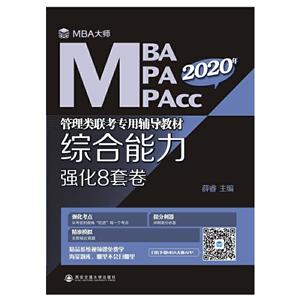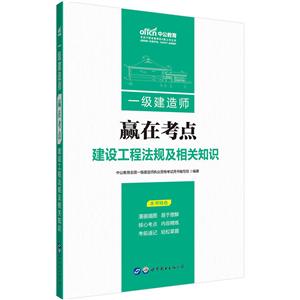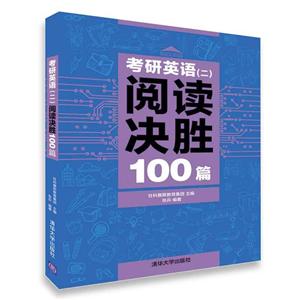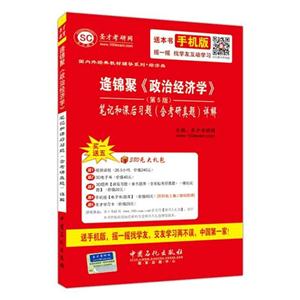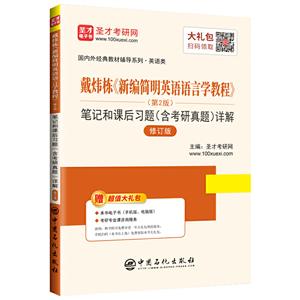化学工程单元操作/(美)沃伦L.麦克凯布/国外名校名著

|
化学工程单元操作/(美)沃伦L.麦克凯布/国外名校名著作者:[美]沃伦L.麦克凯布 开 本:16开 书号ISBN:9787122031921 定价: 出版时间:2018-01-01 出版社:化学工业出版社 |
化学工程单元操作/(美)沃伦L.麦克凯布/国外名校名著 内容简介
本书是在美国有名教材《Unit 0peraUons of Chemical Engineering》的基础上,按照我国化工原理教学大纲要求改编而成的,重点介绍化工单元操作的基本原理、典型设备结构特性及其计算。根据知识点之间的关系,本书在内容编排上力求逻辑严谨,同时兼顾工程实用性。 本书主要内容包括:流体流动、流体输送、非均相体系的流动和非均相混合物的分离、传热、蒸发、扩散原理及相间质量传递、平衡关系和平衡级、气体吸收、蒸馏,浸提和萃取、物料的干燥、板式塔和填料塔的设计等,每章末均附有习题。 本书可作为高等院校化学工程与工艺专业及制药工程、生物工程。过程装备与控制、环境工程、食品与轻化工等相关专业的化工原理双语教材,也可作为外资企业的培训教材,及相关科学研究人员、企业管理者和技术人员的参考书。
化学工程单元操作/(美)沃伦L.麦克凯布/国外名校名著 目录
Introduction Definitions and Principles 10.1 Unit Operations 10.2 Unit Systems 20.2.1 Physical Quantities 20.2.2 SI Units 30.2.3 CGS Units 60.2.4 FPS Engineering Units 70.2.5 Gas Constant 80.2.6 Conversion of Units 90.2.7 Units and Equations 100.3 Dimensional Analysis 12Problems 14Chapter 1 Fluid Flow 151.1 Fluid Statics and Its Application 151.1.1 Nature of Fluids 151.1.2 Hydrostatic Equilibrium 161.1.3 Applications of Fluid Statics 171.2 Fluid Flow Phenomena 191.2.1 Newton’s Law and Viscosity of Fluids 201.2.2 Rheological Properties of Fluids 231.2.3 Types of Fluid Flow and ReynoldsNumber 251.2.4 Boundary Layers 291.3 Basic Equations of Fluid Flow 331.3.1 Measures of Flow 341.3.2 Mass Balance in a Flowing Fluid; Continuity 351.3.3 Overall Energy Balance for Steady-state Flow System 371.3.4 Overall Mechanical Energy Balance for Steady-state Flow System 391.3.5 Discussion on the Overall Mechanical Energy Balance Equation 401.3.6 Macroscopic Momentum Balances 431.4 Incompressible Flow in Pipes and Channels 471.4.1 Shear Stress and Skin Friction in Pipes 471.4.2 Laminar Flow in Pipes and Channels 501.4.3 Turbulent Flow in Pipes and Channels 521.4.4 Friction from Changes in Velocity or Direction 561.5 Pipe Flow Systems 621.5.1 Single Pipes 621.5.2 Multiple Pipe Systems 641.6 Metering of Fluids 661.6.1 Insertion Meters 671.6.2 Full-Bore Meters 69Problems 76Chapter 2 Transportation of Fluids 822.1 Pipe, Fittings, and Valves 822.1.1 Pipe and Tubing 822.1.2 Valves 862.2 Pumps 882.2.1 Developed Head 892.2.2 Suction Lift and Cavitation ofPumps 912.2.3 Positive-Displacement Pumps 932.2.4 Centrifugal Pumps 952.2.5 Multistage Centrifugal Pumps 1092.2.6 Pump Priming 1092.2.7 Pump Selection 1102.3 Fans, Blowers, and Compressors 1112.3.1 Fans 1112.3.2 Blowers and Compressors 1132.3.3 Vacuum pumps 1182.3.4 Comparison of Devices for MovingFluids 119Problems 120Chapter 3 Heterogeneous Flow and Separation 1243.1 Flow Past Immersed Objects 1243.1.1 Drag and Drag Coefficients 1243.1.2 Flow through Beds of Solids 1283.2 Motion of Particles through Fluids 1313.3 Settling Separation of the Solids from Gases 1383.3.1 Gravitational Settling Processes 1383.3.2 Centrifugal Settling Processes 1393.4 Filtration Fundamentals 1403.4.1 Introduction 1403.4.2 Flow Rate-Pressure Drop Relationships 1453.4.3 Filtration Operations-Basic Equations 1483.4.4 Constant Pressure Filtration 1493.4.5 Constant Rate Filtration 1513.4.6 Constant Rate Followed by Constant Pressure Operation 1513.4.7 Vacuum Filtration—Drum Continuous Filtration 1533.4.8 Washing Filter Cakes 1543.5 Introduction to Fluidization 156Problems 157Chapter 4 Heat Transfer and Its Applications 1614.1 Introduction 1614.2 Heat Transfer by Conduction 1634.2.1 Basic Law of Conduction 1634.2.2 Steady-State Conduction 1654.3 Principles of Heat Flow in Fluids 1694.3.1 Typical Heat-Exchange Equipment 1704.3.2 Energy Balances 1724.3.3 Heat Flux and Heat-Transfer Coefficients 1744.4 Heat Transfer to Fluids without Phase Change 1844.4.1 Boundary Layers 1844.4.2 Heat Transfer by Forced Convection in Laminar Flow 1874.4.3 Heat Transfer by Forced Convection in Turbulent Flow 1914.4.4 Heat Transfer in Transition Region between Laminar and Turbulent Flow 1964.4.5 Heating and Cooling of Fluid in Forced Convection Outside Tubes 1974.4.6 Natural Convection 1984.5 Heat Transfer to Fluids with Phase Change 2014.5.1 Heat Transfer from Condensing Vapors 2014.5.2 Heat Transfer to Boiling Liquids 2094.6 Radiation Heat Transfer 2134.6.1 Emission of Radiation 2144.6.2 Absorption of Radiation by Opaque Solids 2174.6.3 Radiation between Surfaces 2194.7 Heat-Exchange Equipment 2244.7.1 Shell-and-Tube Heat Exchangers 2254.7.2 Plate-Type Exchangers 2354.7.3 Extended-Surface Equipment 2374.7.4 Condensers 238Problems 240Chapter 5 Evaporation 2455.1 Summarize 2455.1.1 Single-and Multiple-Effect Operation 2455.1.2 Vacuum Evaporation 2465.1.3 Liquid Characteristics 2475.2 Evaporation Equipment 2475.2.1 Circulation Evaporators 2485.2.2 Once-Through Evaporators 2505.2.3 Choice of the Evaporators 2525.3 Single-Effect Evaporation 2525.3.1 Evaporator Capacity 2525.3.2 Boiling-Point Elevation and Dühring’s Rule 2535.3.3 Effect of Liquid Head and Friction on Temperature Drop 2545.4 Calculation Methods for Single-Effect Evaporator 2555.4.1 Methods of Operation of ?Evaporators 2555.4.2 Material Balances for Single-Effect Evaporator 2565.4.3 Enthalpy (Heat) Balances forSingle-Effect Evaporator 2575.4.4 Heat-Transfer Coefficients 2595.4.5 Single-Effect Calculations 2605.5 Multiple-Effect Evaporators 2615.5.1 Methods of Feeding 2615.5.2 Calculation Methods for Multiple-Effect Evaporators 2625.5.3 Effect of Liquid Head and Boiling-Point Elevation 2665.5.4 Optimum Number of Effects 2675.5.5 Multiple-Effect Calculations 2675.5.6 Vapor Recompression 270Problems 271Chapter 6 Principles of Diffusion and Mass Transfer Between Phases 2746.1 Theory of Diffusion 2756.2 Prediction of Diffusivities 2836.3 Mass-Transfer Theories 289Problems 295Chapter 7 Equilibrium Relations and Equilibrium- Stage Operations 2997.1 Equilibrium Relations 2997.1.1 Gas-Liquid Equilibrium 2997.1.2 Vapor-Liquid Equilibrium Relations 3007.2 Equilibrium-Stage Operations 3057.2.1 Equipment for Stage Contacts 3057.2.2 Principles of Stage Processes 307Problems 317Chapter 8 Gas Absorption 3218.1 Principles of Absorption 3218.1.1 Material Balances 3228.1.2 Limiting and Optimum Gas-liquid Ratio 3248.1.3 Rate of Absorption in Packed Towers 3278.2 Calculation of Tower Height 3298.2.1 Fundamental Calculation Equation of Packing Height 3298.2.2 Number of Transfer Units and Height of A Transfer Unit 3308.2.3 Alternate Forms of Transfer Coefficients 3328.2.4 Effect of Pressure 3358.2.5 Temperature Variations in Packed Towers 3358.3 Multicomponent Absorption 3388.4 Desorption or Stripping 3398.5 Absorption from Rich Gases 3428.6 Absorption in Plate Columns 3448.7 Absorption with Chemical Reaction 3448.8 Cocurrent flow operation 345Problems 346Chapter 9 Distillation 3489.1 Flash Distillation 3489.2 Simple Batch or Differential Distillation 3509.3 Simple Steam Distillation 3539.4 Continuous Distillation with Reflux 3549.4.1 Action on an Ideal Plate 3549.4.2 Combination Rectification and Stripping 3559.4.3 Material Balances in Plate Columns 3579.4.4 Number of Ideal Plates; McCabe-Thiele Method 3599.4.5 Special Cases for Rectification Using McCabe-Thiele Method 3779.4.6 Batch Distillation with Reflux 3819.5 Azeotropic and Extractive Distillation 3829.6 Plate Efficiencies 385Problems 388Chapter 10 Leaching and Extraction 39310.1 Leaching 39310.1.1 Leaching Equipment 39310.1.2 Principles of Continuous Countercurrent Leaching 39510.2 Liquid Extraction 39910.2.1 Extraction Equipment 40010.2.2 Principles of Extraction 405Problems 422Chapter 11 Drying of Process Materials 42611.1 Introduction and Methods of Drying 42611.2 Properties of Moist Air and Humidity Chart 42911.2.1 Humidity 42911.2.2 Humid Heat of an Air–Water Vapor Mixture 43111.2.3 Humid Volume of an Air–Water Vapor Mixture 43211.2.4 Total Enthalpy of an Air–Water Vapor Mixture 43211.2.5 Dew Point of an Air–Water Vapor Mixture 43311.2.6 Adiabatic Saturation Temperatures 43311.2.7 Dry-Bulb Temperature and Wet-Bulb Temperature 43411.2.8 Humidity Chart 43711.2.9 Measurement of Humidity 44111.3 Principles of Drying 44211.3.1 Temperature patterns in dryers 44211.3.2 Phase Equilibria 44311.3.3 Data of Equilibrium Moisture Content for Inorganic and Biological Materials 44611.4 Rate-of-Drying Curves 44711.4.1 Method Using Experimental Drying Curve 44711.4.2 Rate of Drying Curves for Constant-Drying Conditions 44811.4.3 Critical Moisture Content 44911.4.4 Drying in the Constant-Rate Period 45011.4.5 Drying in the Falling-Rate Period 45011.4.6 Moisture Movements in Solids During Drying in the Falling-Rate Period 45111.4.7 Effect of Shrinkage 45211.5 Calculation Methods for Constant-Rate Drying Period 45211.5.1 Method Using Experimental Drying Curve 45211.5.2 Method Using Rate-of-Drying Curve for Constant-Rate Period 45311.5.3 Method Using Predicted Transfer Coefficients for Constant-Rate Period 45311.5.4 Effect of Process Variables on Constant-Rate Period 45611.6 Calculation Methods for Falling-rate Drying Period 45711.6.1 Method Using Numerical Integration 45711.6.2 Calculation Methods for Special Cases in Falling-Rate Region 45811.7 Equations for Various Types of Dryers 45911.7.1 Through-Circulation Drying in Packed Beds 45911.7.2 Tray Drying with Varying Air Conditions 46311.7.3 Material and Heat Balances for Continuous Dryers 46411.7.4 Continuous Countercurrent Drying 46611.8 Drying Equipment 46811.8.1 Dryers for Solids and Pastes 46911.8.2 Dryers for Solutions and Slurries 47411.8.3 Selection of Drying Equipment 477Problems 478Chapter 12 Tray and Packed Tower Design 48312.1 Packed Tower Design 48312.1.1 Packed Tower and Packings 48312.1.2 Fluid Mechanics of Packed Tower 48612.1.3 Calculations of Packed Tower 49112.2 Plate Tower Design 49312.2.1 Introduction 49312.2.2 Fluid Mechanics of Plate Columns 49512.2.3 Plate Efficiencies 504Appendix 511 1 Unit Conversion 511 2 Dimensionless Groups 512 3 Standard Steel Pipe 513 4 Condenser and Heat-Exchanger Data 514 5 Properties of Liquid Water 518 6 Properties of Saturated Steam and Water 518 7 Viscosities of Gases 520 8 Viscosities of Liquids 522 9 Thermal Conductivities of Metals 524 10 Thermal Conductivities of Various Solids and Insulating Materials 524 11 Thermal Conductivities of Gases and Vapors 526 12 Thermal Conductivities of Liquids Other Than Water 526 13 Specific Heats of Gases 527 14 Specific Heats of Liquids 529 15 Prandtl Numbers for Gases at 1 atm and 100℃ 531 16 Prandtl Numbers for Liquids 531 17 Diffusivities and Schmidt Numbers for Gases in Air at 0℃ and 1 atm 531 18 Collision Integral and Lennard-Jones Force Constants 532 19 Equilibrium Data for Ethanol-Water System at 101.325 kPa 533 20 Henry’s Law Constants for Gases in Water 534 21 Partial Pressure p of SO2 in The Gas in Equilibrium with The Mole Fraction x of SO2 in The Liquid at 20℃ 535 22 Boiling Point for Inorganic Solution at 1 atm 535
教材 研究生/本科/专科教材 工学
在线阅读
- 最新内容
- 相关内容
- 网友推荐
- 图文推荐
零零教育社区:论坛热帖子
| [高考] 2022 西安电子科技大学《软件工程》大作业答案 (2022-04-25) |
| [家长教育] 孩子为什么会和父母感情疏离? (2019-07-14) |
| [教师分享] 给远方姐姐的一封信 (2018-11-07) |
| [教师分享] 伸缩门 (2018-11-07) |
| [教师分享] 回家乡 (2018-11-07) |
| [教师分享] 是风味也是人间 (2018-11-07) |
| [教师分享] 一句格言的启示 (2018-11-07) |
| [教师分享] 无规矩不成方圆 (2018-11-07) |
| [教师分享] 第十届全国教育名家论坛有感(二) (2018-11-07) |
| [教师分享] 贪玩的小狗 (2018-11-07) |

